TruthScan vs. GPT-4o Images - TruthScan AI Image Detector
Against one of the most advanced AI image generators out there, TruthScan more than held its ground against GPT-4o.
John Angelo Yap
Updated August 13, 2025
A robot getting caught creating deepfake, generated with GPT-4o
Reading Time: 4 minutes
AI-generated images aren’t just getting better — they’re getting frighteningly good. The days of six-fingered hands and warped backgrounds are fading fast. Models like OpenAI’s GPT-4o are raising the bar, producing visuals so realistic they can trick even a trained eye.
And that means AI image detectors have to work overtime. If they were built for the DALL·E era, they’ll struggle in the GPT-4o era. Today, we’re putting TruthScan to the test against one of the most advanced AI image generators out there.
We’re skipping the hype and marketing fluff. Instead, we’ll cover what TruthScan is, what GPT-4o Images are capable of, and why this matchup actually matters if you care about spotting AI-generated visuals in the wild.
What is TruthScan?
TruthScan is an AI image detection platform designed to tell whether a visual is AI-generated or human-made. The idea is simple: upload an image, and TruthScan runs it through its model to determine how likely it is to be AI.

Some of its key features:
- Fast analysis — Results in seconds.
- Confidence scoring — Not just a “yes” or “no,” but a percentage score showing how certain it is.
- Model-agnostic detection — Works across different AI generators, from older models like DALL-E to newer powerhouses like Midjourney, Stable Diffusion, and GPT-4o.
- Simple UI — Drop an image, get results. No advanced setup required.
What stands out with TruthScan is its attempt to blend speed with transparency. It doesn’t just spit out a verdict, it gives you a sense of how sure it is — which matters, because AI detection is rarely black and white.
What is the GPT-4o Image Generator?
Most people think of GPT-4o as a text model: an advanced, multimodal chatbot that can handle natural conversation and complex reasoning. But GPT-4o also has image generation capabilities that rival — and in some cases, surpass — dedicated image models.

Compared to older AI image generators, GPT-4o produces visuals that:
- Handle fine details better (fewer glitches, more realistic textures).
- Nail perspective and lighting with surprising accuracy.
- Can blend multiple concepts seamlessly into one coherent image.
- Work directly from conversational prompts — you don’t need a long, technical “prompt engineering” process.
This makes GPT-4o especially dangerous for casual misinformation. While most people could once spot AI art by its “off” details, GPT-4o’s outputs are harder to catch. The differences between AI and human photography are subtle, and that’s exactly why tools like TruthScan exist.
Why This Matchup Matters
GPT-4o, compared to other AI image generators, are newer, better, and capable of fooling more people, more often.
This means two things:
- Detection tech has to evolve just as fast. If a detector isn’t trained on newer models, it’s already obsolete.
- Confidence scores become even more important. Spotting a GPT-4o image isn’t just about getting it “right” — it’s about knowing how close the call really was.
For journalists, educators, fact-checkers, and even casual internet users, the ability to tell whether a polished, believable image came from GPT-4o can be the difference between spreading something false or setting the record straight.
TruthScan vs. GPT-4o: The Test
Sample #1
Truthscan: Correctly classified image as AI-generated.
AI Likelihood Score: 91%
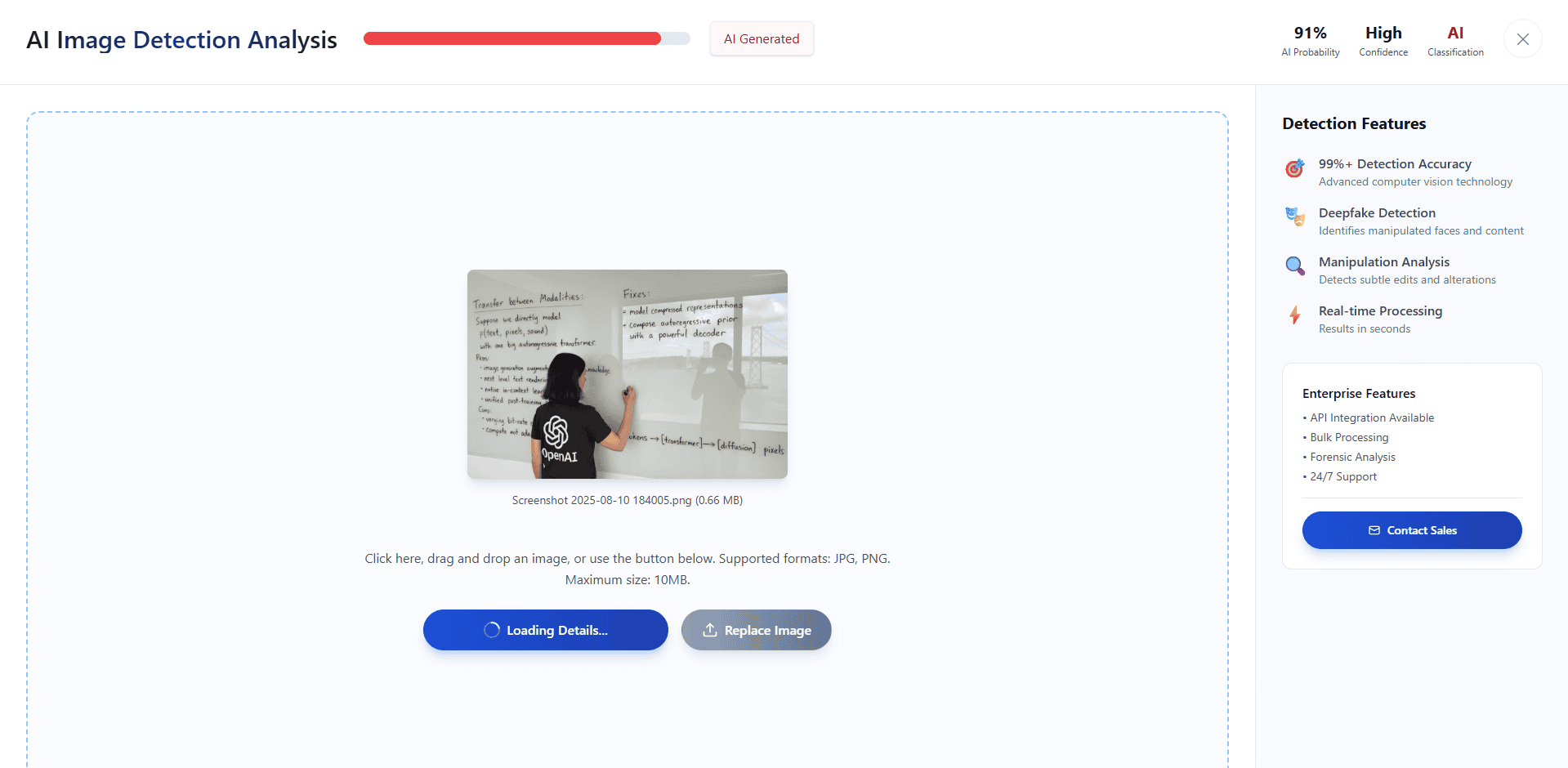
Sample #2
Truthscan: Correctly classified image as AI-generated.
AI Likelihood Score: 97%
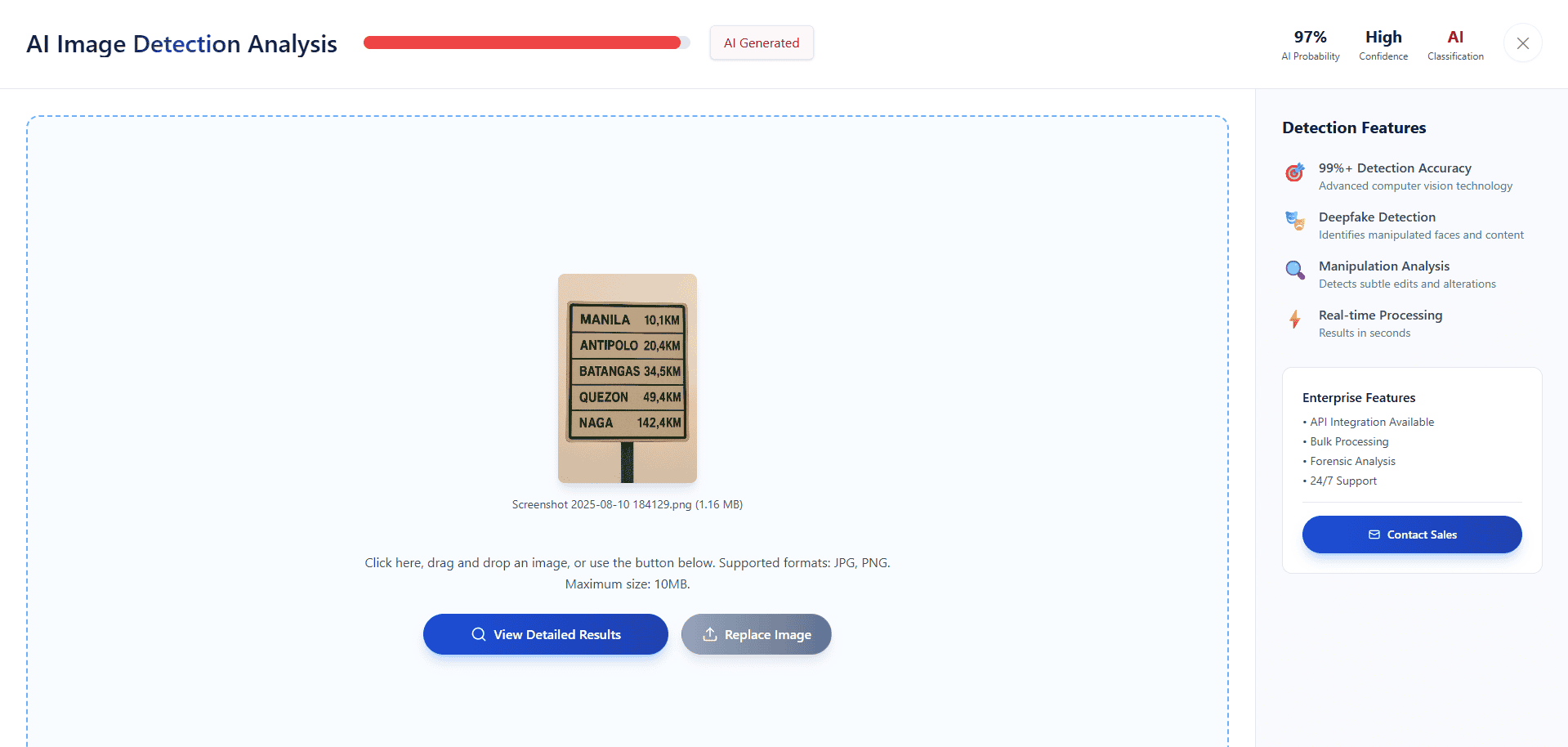
Sample #3
Truthscan: Correctly classified image as AI-generated.
AI Likelihood Score: 97%

Sample #4
Truthscan: Correctly classified image as AI-generated.
AI Likelihood Score: 98%
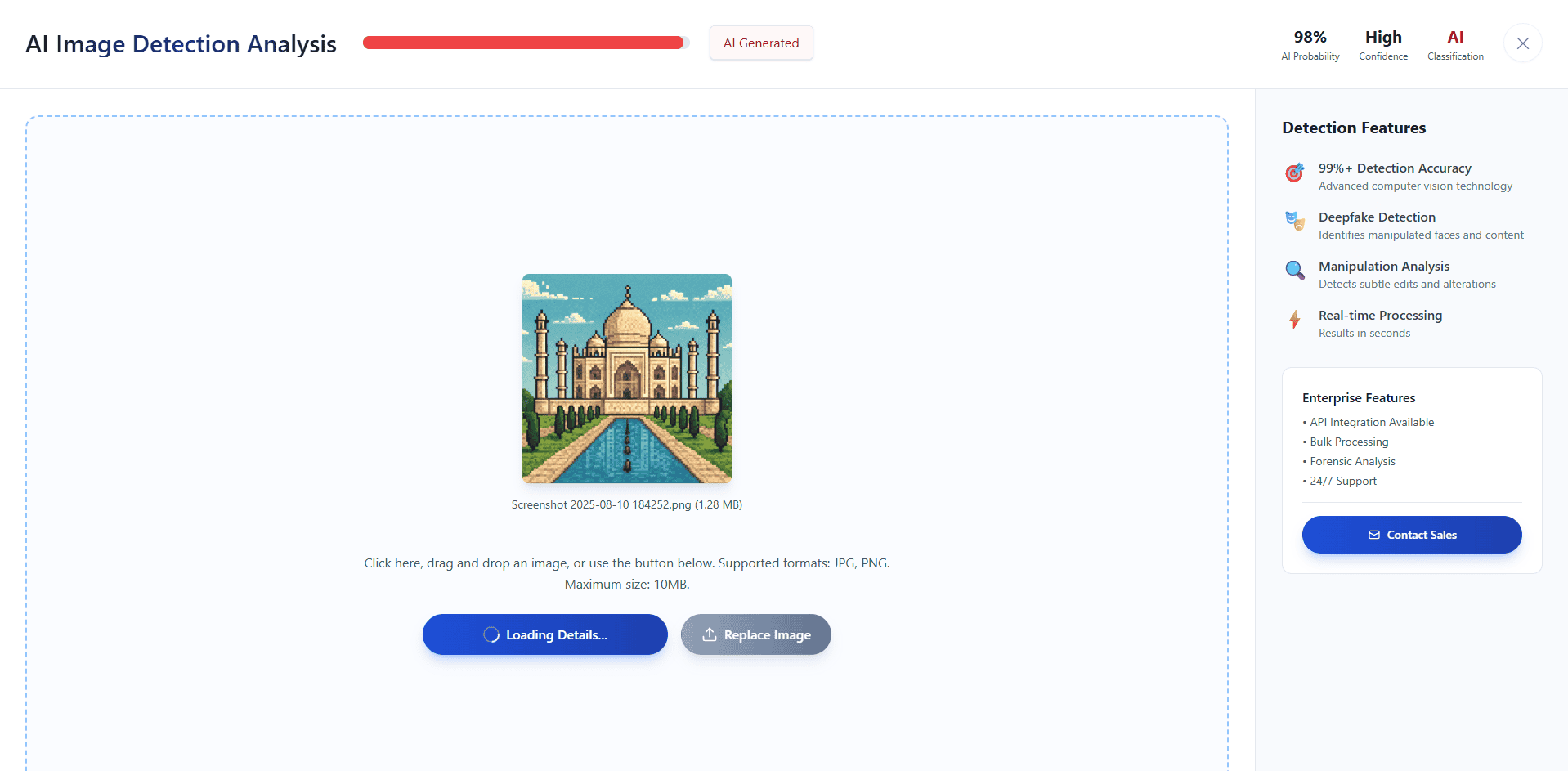
Sample #5
Truthscan: Correctly classified image as AI-generated.
AI Likelihood Score: 93%
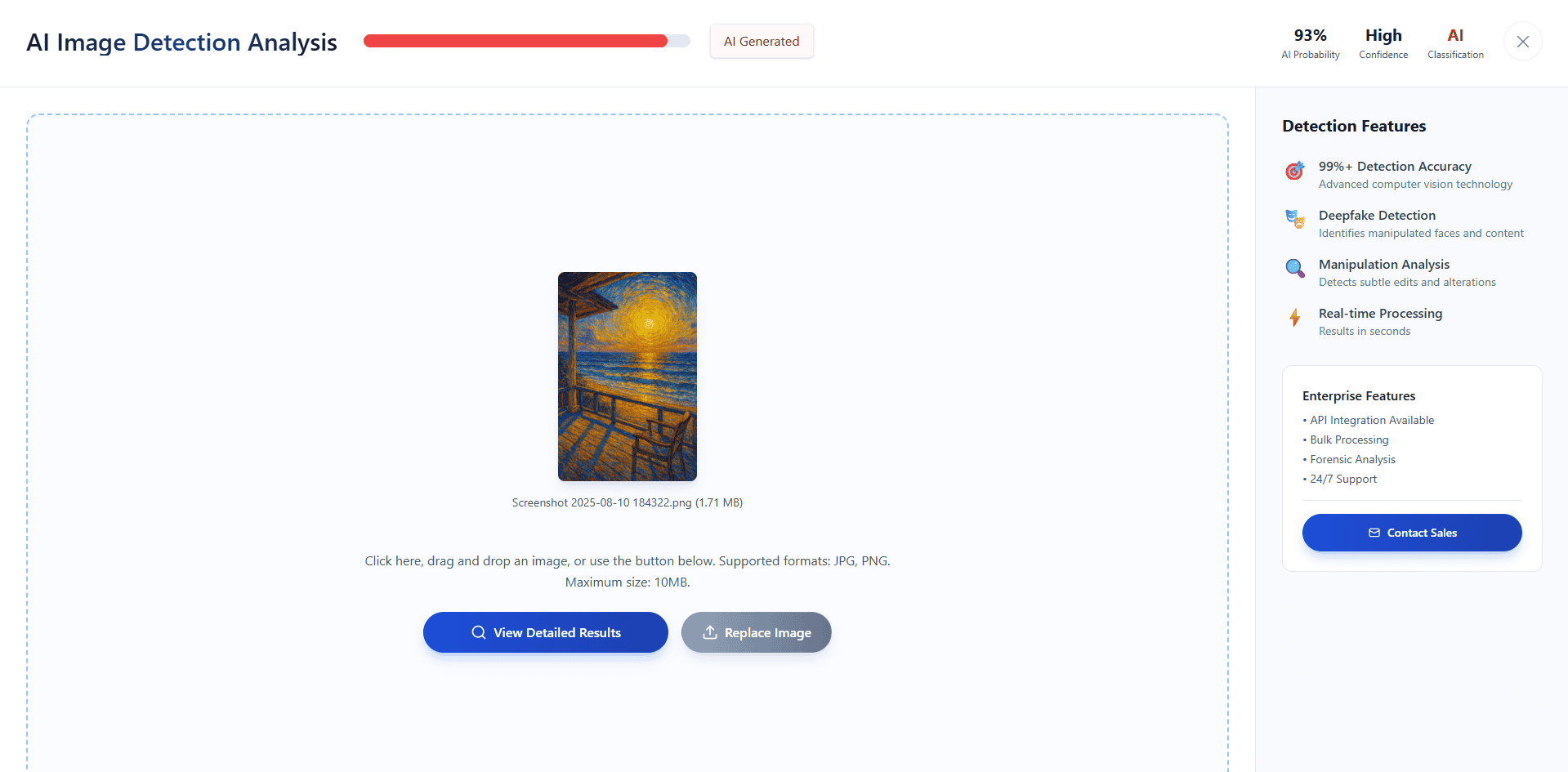
Sample #6
Truthscan: Correctly classified image as AI-generated.
AI Likelihood Score: 98%
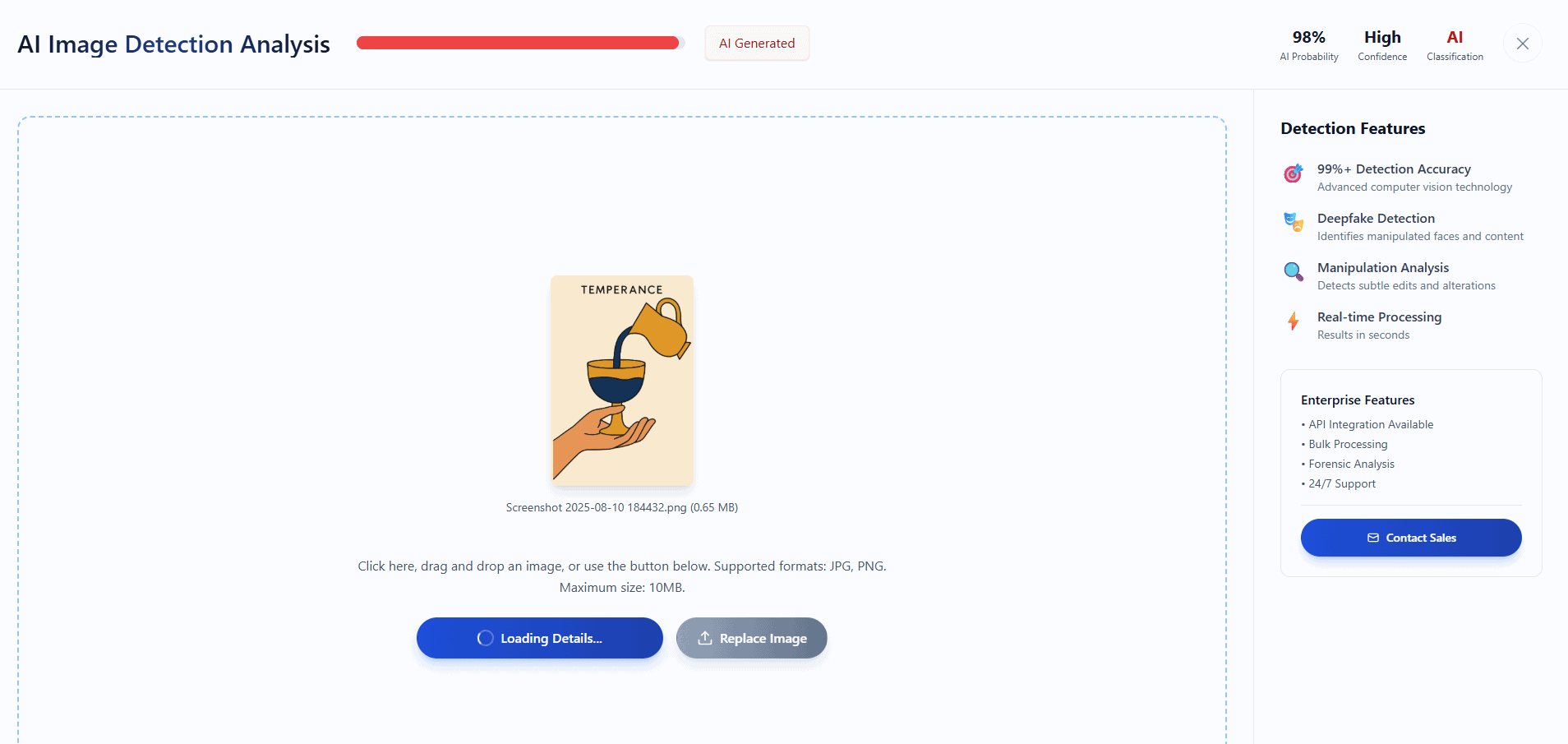
Sample #7
Truthscan: Correctly classified image as AI-generated.
AI Likelihood Score: 95%
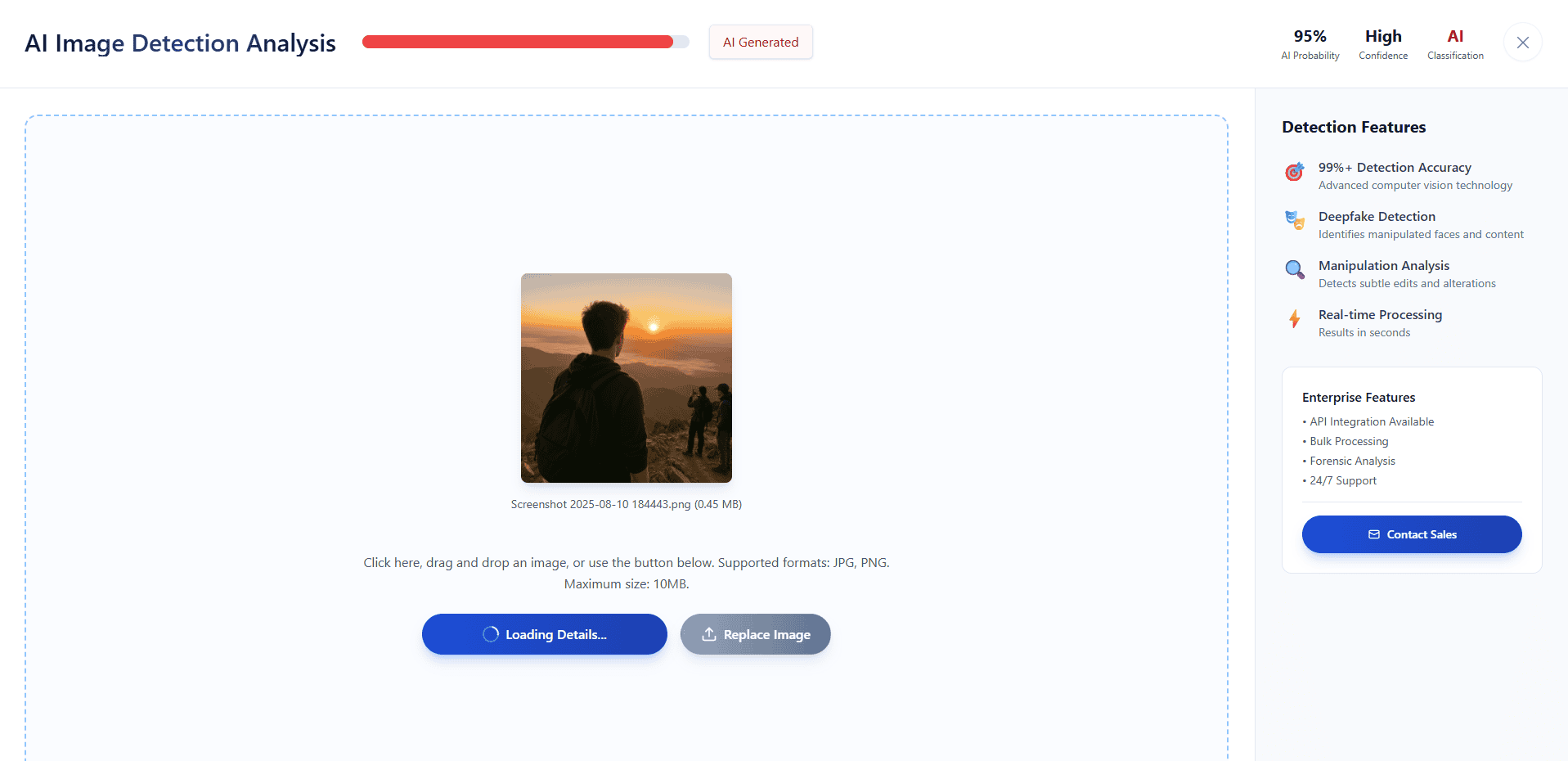
Average Score
Test Number | TruthScan |
#1 | 91% |
#2 | 97% |
#3 | 97% |
#4 | 98% |
#5 | 93% |
#6 | 98% |
#7 | 95% |
Score | 95.57% |
The Bottom Line
Here’s the thing about GPT-4o: it’s not just another AI image generator. It’s part of a larger, multimodal AI system, which means it’s getting better fast. Images that would have been obvious fakes in 2023 now look perfectly believable in 2025.
That makes TruthScan’s performance here even more impressive. In our tests, it nailed a 95.57% correctness rate against GPT-4o’s images — which, given how clean and convincing those images are, is no small feat.
It’s not just about catching the easy stuff anymore. GPT-4o’s outputs push the limits of realism, and TruthScan didn’t just keep up — it dominated. That level of accuracy means you’re not just getting a “maybe” tool, you’re getting something you can actually trust when the stakes are high.
If image authenticity matters to your work, TruthScan deserves a spot in your toolkit. In a time when AI visuals can fool even the most skeptical eyes, it’s rare to find a detector this sharp — and right now, TruthScan is one of them.
Want to Learn Even More?
If you enjoyed this article, subscribe to our free newsletter where we share tips & tricks on how to use tech & AI to grow and optimize your business, career, and life.